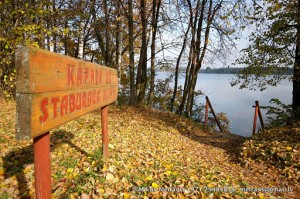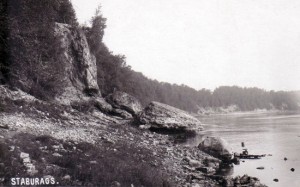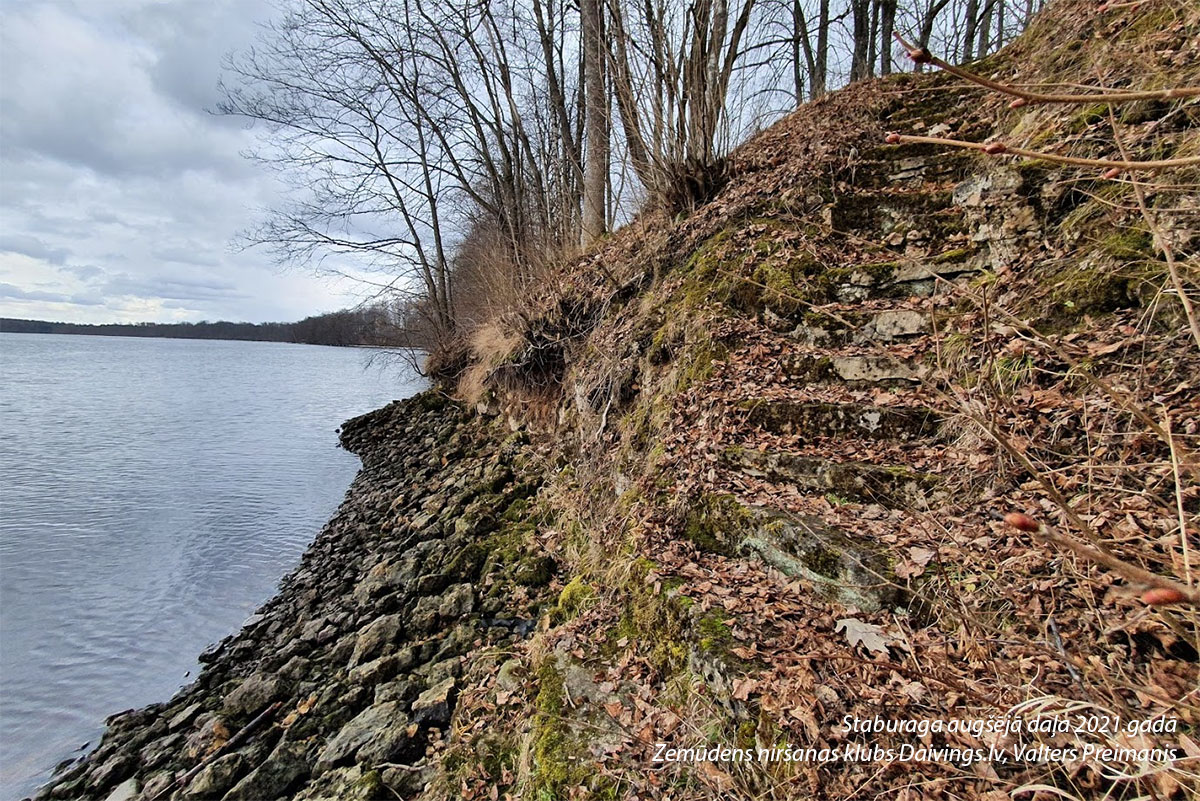Several groups of divers have dived in the Daugava near Staburags, one of them is SFRS divers. There is a video in the archive of the diving club "DAIVINGS", where a group of divers from SFRS surveyed Staburags. Staburags was a spring limestone cliff 19.5 meters high and 60 m wide, created by a spring over thousands of years. The only alpine crimea deposit in Latvia. Flooded after the construction of Plavinas HPP in 1965. Tell us if you know more about Staburags before the flooding of the Daugava.
Table of Contents
What was the Staburaga Rock like?
The Staburags cliff was about 18.5 meters high freshwater limestone cliff on the left bank of the dolomite cliff of the Daugava canyon valley, 1 kilometer below Vīgante, 9 kilometers above Koknese. Carbonate groundwater, which flowed into the cliff as springs, precipitated calcite and calcified the plants, formed a spring lime tuff ridge - Staburadze. Its limestone grew larger and larger every 300 years from its gravity to grow again.
Plavinas HPP reservoir floods Staburags
After the installation of the Plavinas HPP reservoir in 1966, Staburags was flooded. Latvia lost one of the most outstanding geological natural monuments together with rare plant species nearby. After the flooding of Staburags in December 1966 Song sculpture stood in the water up to the knees and for a moment up to the neck, and in 1973 it was installed elsewhere, higher on shore.
What was written about Staburag before?
"A little further from Liepavots - Svētavota cries Staburags. Staburags is a limestone rock stud, over which lime-rich water flows. The stud itself also has detailed springs. Limed water covers the plants and mosses growing on the rock with lime. This results in a growing limestone from which water droplets are constantly leaking. That is why Staburags is also called the "weeping rock", and many folk legends and legends surround it. Staburags had several landslides. In 1861, a large part of Staburags broke down and fell into the Daugava. In 1916, the Staburaga cape itself fell. Its ruins lie at the foot. ” Jēkabpils Vēstnesis. - June 9, 1938.
- Find out more about diving in Staburags, Daugava, depth 27 meters, page Diving in Staburaga Daugava.
Today, the head of the Staburags cliff, at the very top, is seven meters deep in the Daugava. At the stairs on the deep water abyss there is a sign: "To Staburags". On the shore above the Staburags cliff are the Staburags houses, where the writers Māra Svīre and Vladimirs Kaijaks live. They were built in 1926 on the land of the former manor.

The lowest water level in Pļaviņas reservoir was lowered in 1986, when the Chernobyl nuclear power plant crashed. At that time, the writer Vladimir Kaijak and his friend were walking up Staburaga. They had water up to their chests, but Staburag's head was covered with a layer of mud with sharp snails.

Under the guidance of underwater archaeologist Voldemar Raina, divers dived to a depth of 27 m in 1998 to the foot of Staburags, and although they had poor visibility, they managed to film part of the Staburags cliff. Staburagu deck sludge and shells. The water gradually dissolves the limestone and Staburags slowly crumbles, as evidenced by the fallout cone at its foot.

Materials of la.lv and other authors have been used.

